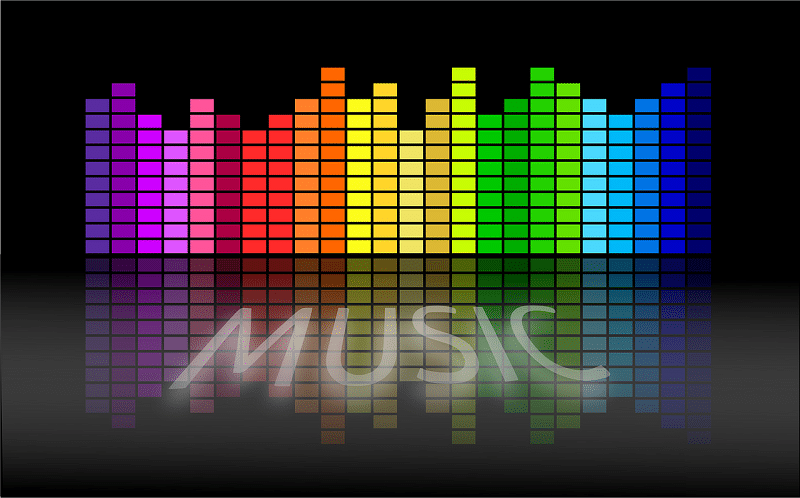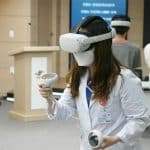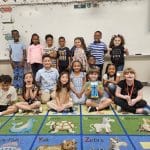October 6, 2020
“When I see the Universe through my songs, I recognize it, then only I know it…”.
–Rabindranath Tagore (from Gitabitan)

Teaching is always a challenging profession and one in which teachers are constantly looking for ways to make learning more interactive and engaging. The use of songs in the classroom can provide both an enhanced learning experience for the students and improved learning outcomes.
Music and human beings have a strong relationship. It plays a significant role in the child’s growth even before birth and ignites all areas of child development. Introducing music in the early years of a child can help ensure that baby grows up healthy. It has been proved scientifically that listening to music during pregnancy will not only have a soothing and uplifting effect on the pregnant woman, but also a positive influence on the unborn baby and contribute to a healthy and happy adult later in life.
We are able to enjoy the benefits of music from the moment we’re born. Right from birth, parents use music to calm and soothe children, to express their love, joy, and to engage and interact. Mothers singing lullabies at home and teachers singing rhymes and poems at Kindergarten make learning fun for children and help them learn to express themselves and share feelings. But as the child grows, he is deprived of opportunities to learn with music. Although elementary grades integrate music in the curriculum to some extent, in higher grades it is completely excluded from the curriculum to make room for other subjects. The sad truth is that many administrators and non-music teachers do not find music equally as important as math or science.
Music which is a powerful part of our personal life is completely ignored in our school/work life. This makes it all the more important to understand that music is one of the joys of life and can be one of the joys of learning as well.
According to Gardner’s theory of multiple intelligence, out of the eight multiple intelligences, one is musical intelligence which includes the ability to perform, compose, and appreciate music and musical patterns. Students with high musical intelligence learn well by using rhythm, enjoy listening to and/or creating music, and may study better with music in the background.
Before actually learning some ways to integrate music into the curriculum it’s important to understand how the integration of songs in the classroom helps students to develop deep content knowledge and contribute to their development of 21st century skills.
RECOMMENDED: https://global-edtech.com/category/community/
There is a heap of incontestable research showing that an education rich in music improves students’ cognitive function and academic performance. Music instruction enhances spatial & arithmetic skills, and raises student achievement and imagination. It provides an enjoyable, low-stress learning method in the classroom and helps students to retain information. It also creates a highly focused learning state in which large amounts of content information can be processed and learned. The songs, chants, poems, and raps improve the memory of content facts and details.
The integration of rhyme, rhythm, and melody has been shown to be beneficial for disadvantaged learners and special needs students also. Students who have difficulty absorbing new materials discover song as a non-stressful medium for learning, while those with dyslexia or low vision find singing easier than decoding text. The strong relationship between the integration of art and student achievement helps teachers to close the achievement gap in education.
Many teachers presume that they need professional training in order to integrate music in their classrooms but this is not true. There are multiple ways in which teachers can use music as a teaching tool. Here I will share a few examples of how to incorporate music into subjects like social studies, maths, science, etc.
Social Studies teachers often hear how boring the subject is from students of all ages and ability levels. Let’s look at a few examples of how music can be paired along with Social Studies. There are chapters on the Russian revolution, European and French revolution in grade IXth. Instead of giving assignments to check the understanding of students they can be asked to create musical videos on these topics. Musical videos are great for storytelling and provide additional context and richness to historical content. Another way is to introduce music and dance from each era, teaching students the most popular moves and allowing them to examine the change in both over time.
Music is the electrical soil in which the spirit lives, thinks and invents.”
–Ludwig van Beethoven
This is a student-centered approach and leads to the motivation for research, developing a real understanding of the topic, and getting creative about communicating that knowledge in the form of a song. Students cannot simply copy-paste information from the net. In order to write decent lyrics for a song, one must have a good grasp of the subject. I hope this will definitely keep them engaged and excited about learning social studies.
Mathematics seems to be like a nightmare to most students. Many students struggle with this subject. However, if you bring a little music into your classroom you yourself will notice a sea change in your students’ attitude towards this subject.
“There is geometry in the humming of the strings, there is music in the spacing of the spheres.”
– Pythagoras
Music and math have a close relationship. Mathematics is the study of patterns and music involves creating patterns of sound. Musical notes can help teach fractions. Changing instruments but playing the same song can help teach patterns and using pitch can help with frequency and ratios. Students can be asked to make their own musical instruments using waste material, especially during lockdown. They can make different types of instruments and analyze the behavior of the same sound when played on different types and sizes of instruments. This definitely helps students to understand patterns in mathematics. They are indeed related. We commonly use numbers and math to describe and teach musical notation. Students can be asked to explore the connection between the two disciplines. They will definitely fall in love with mathematics when they will come to know that patterns of rhythm, beat, harmony, and melody are actually embodied mathematical expressions.
Science might be a favourite subject for many students but again many find it tough and challenging. Music can be used to teach about sound waves and having children experience frequency in relation to pitch. Students can be asked to prepare a dance sequence to simulate the life cycle of various animals or the photosynthesis process. From songs about the periodic table in chemistry, or the organelles of a cell in biology to the Newton’s laws of motion in Physics, the internet is filled with an impressive array of free educational music videos. These videos can be played in the classroom to connect students with the content. It has been rightly said that…
Music is the bridge between art and science.
I am a computer science teacher. My own journey of using music in the classroom is not very long!!! I’m not sure why it took me so long to think of tapping into the power of music in my classroom but I will definitely show you how I am using music to spark joy and make learning more engaging. I have written my own songs and raps aligned to the curriculum and made musical videos. Here are the links to a few of my videos:
Apart from the curriculum, I am using music to connect my students to real-world problems. I have written rap songs on the most pressing issues our world is facing today like: cybersecurity, road safety, staying safe during lockdown, girls in STEM, etc. Here are links to a few of my videos:
Although I understand that integrating music and song lyrics into lessons may not be your first choice, however I urge you to give it a try. This will enliven your classroom environment and help students to thrive. There is no downside to music exerting a powerful pull on our students, a pull that can be harnessed to create a more effective learning environment. I would like to end with a famous quote by Plato:















0 Comments